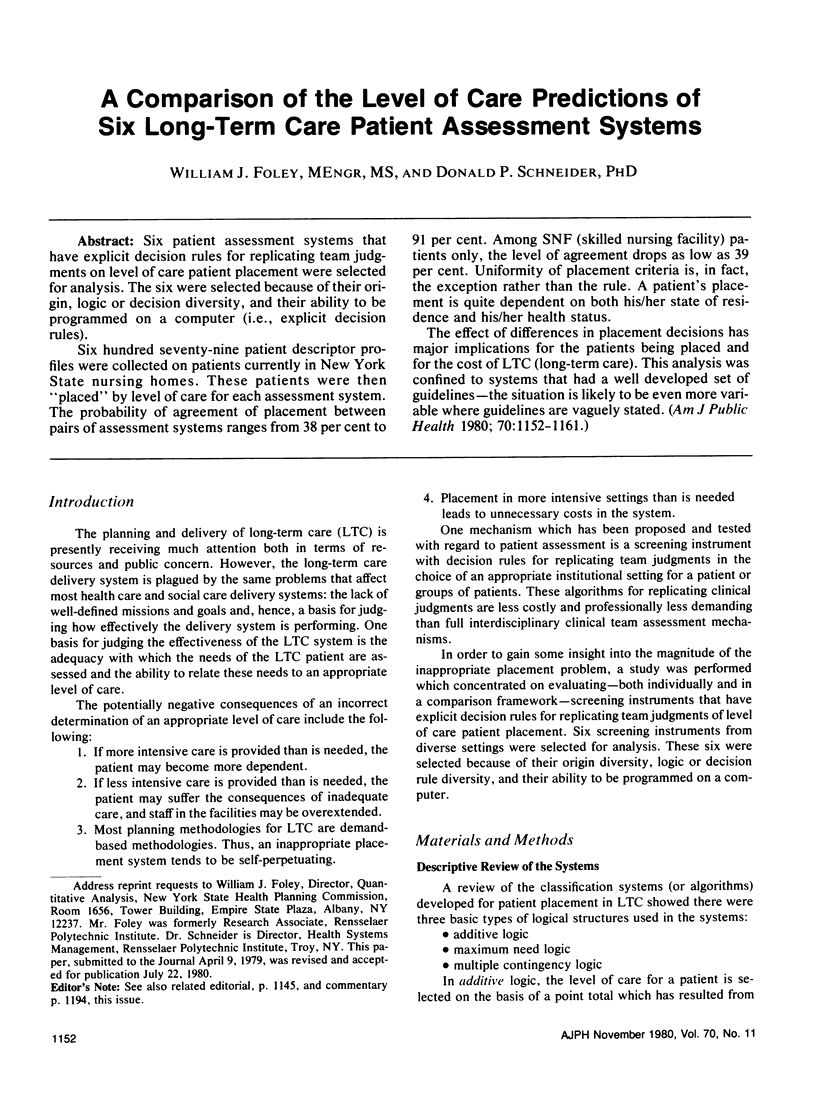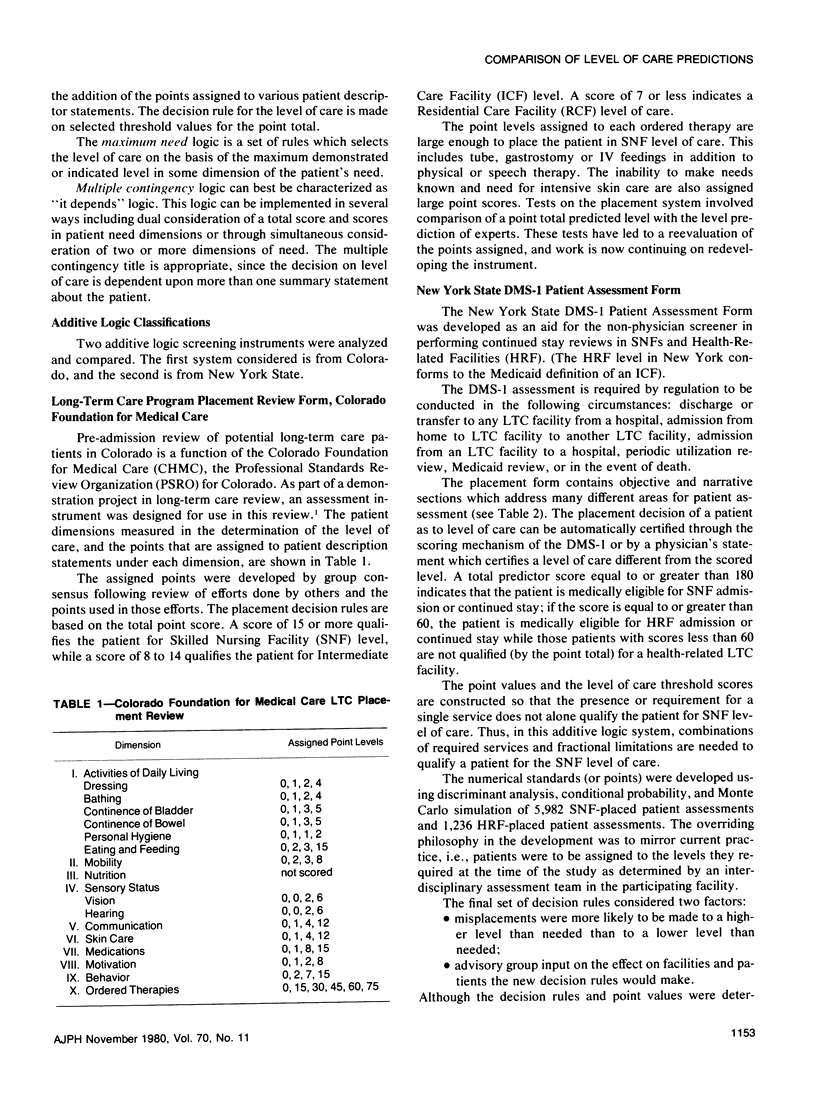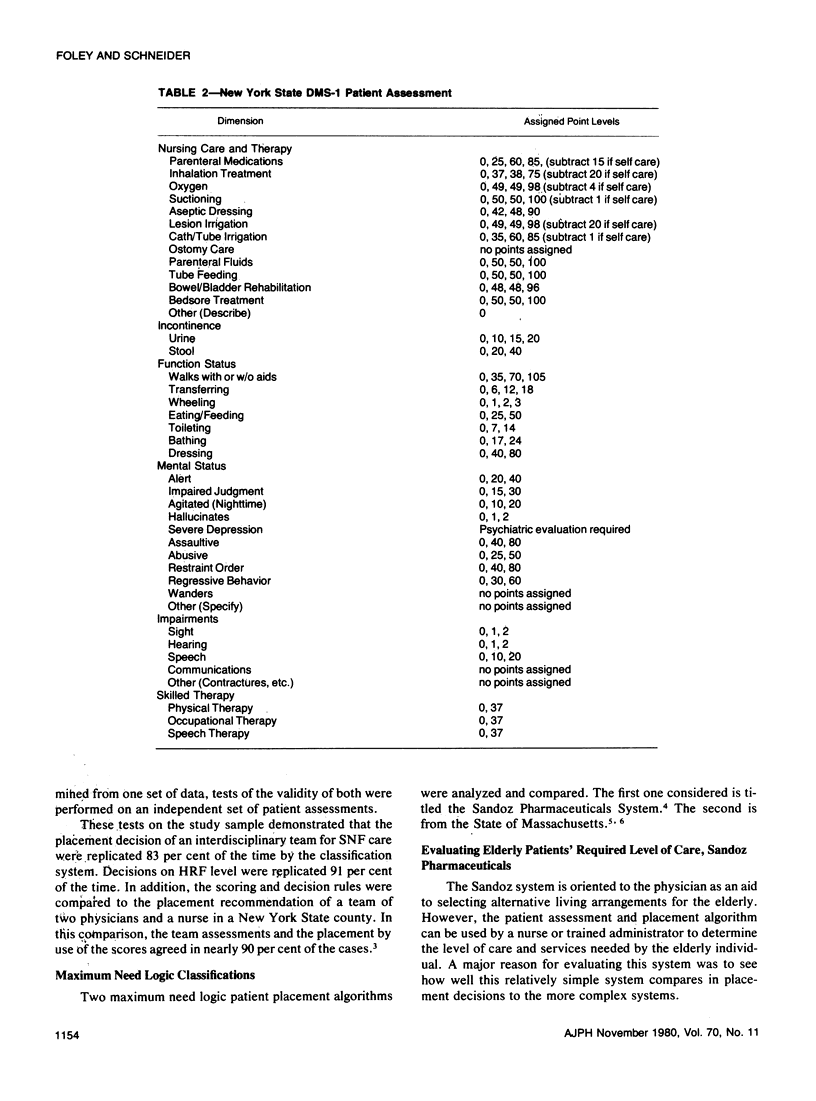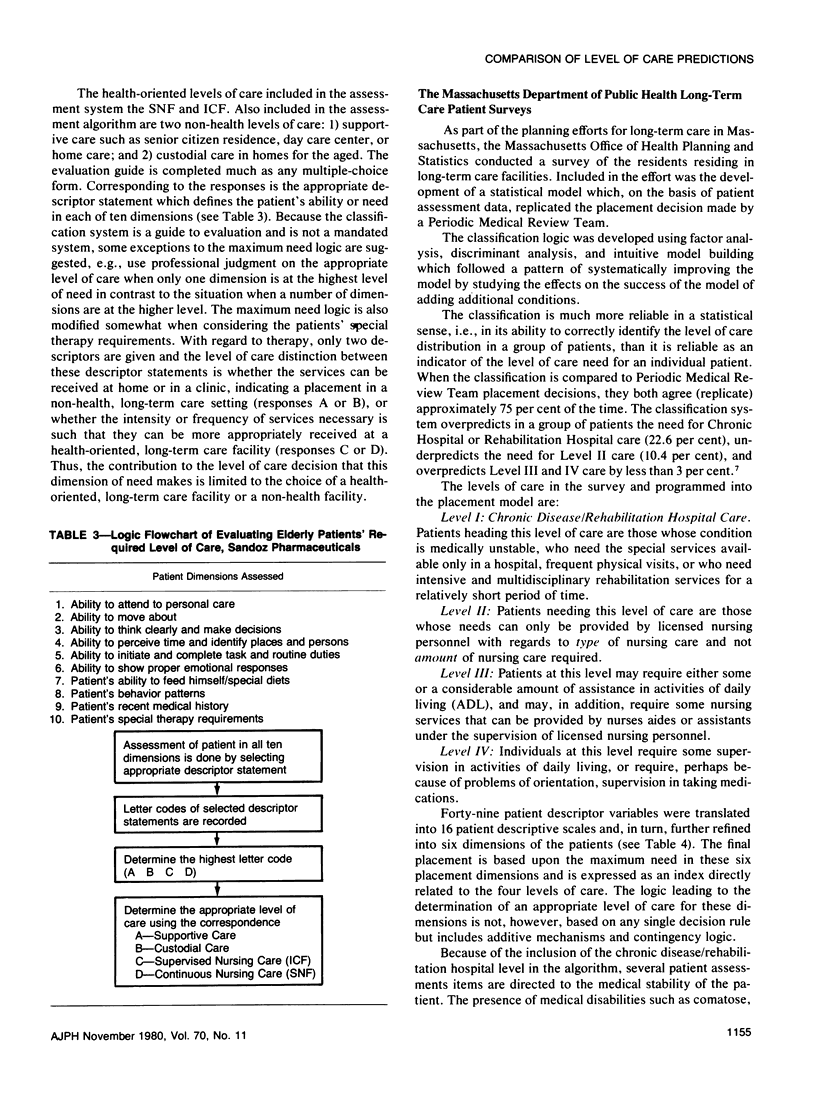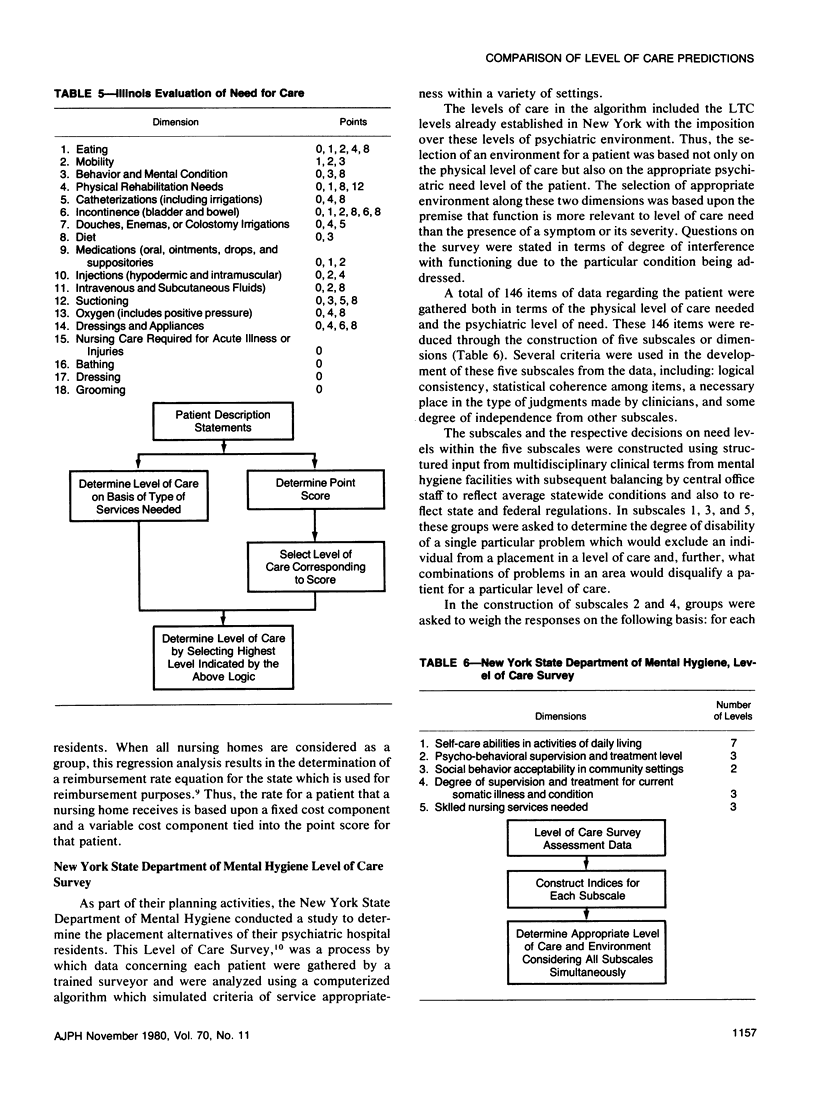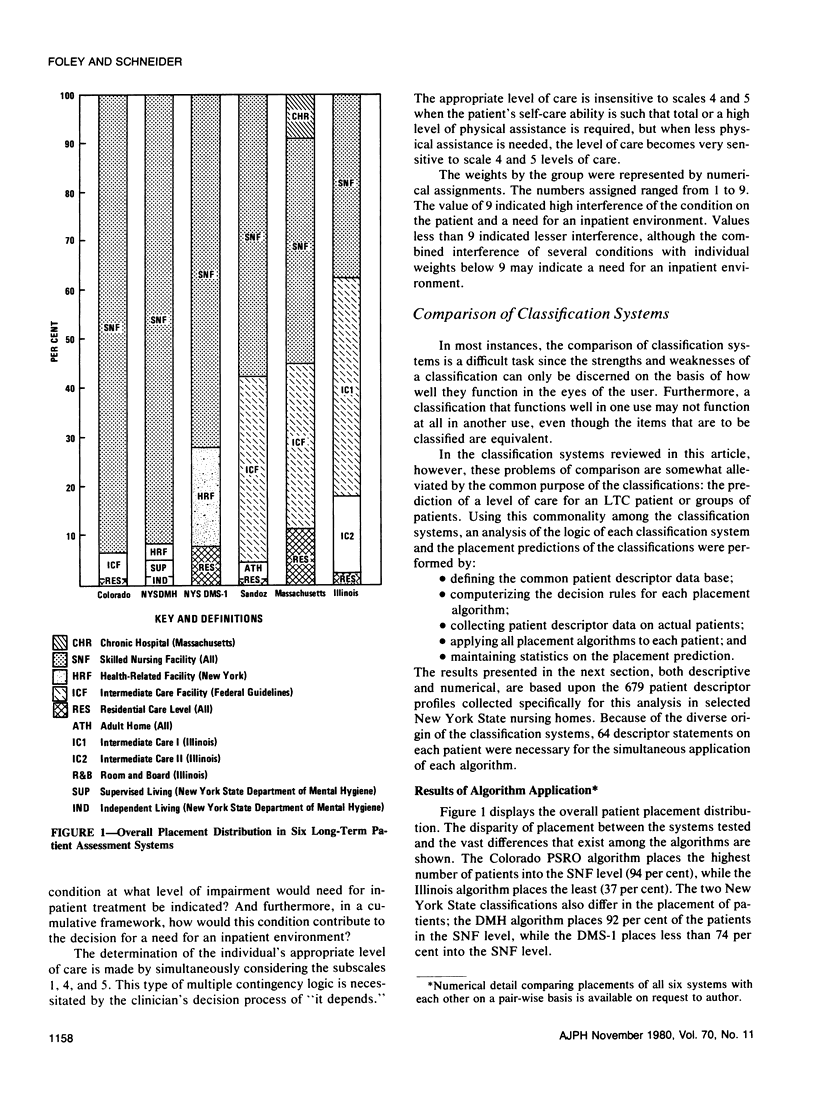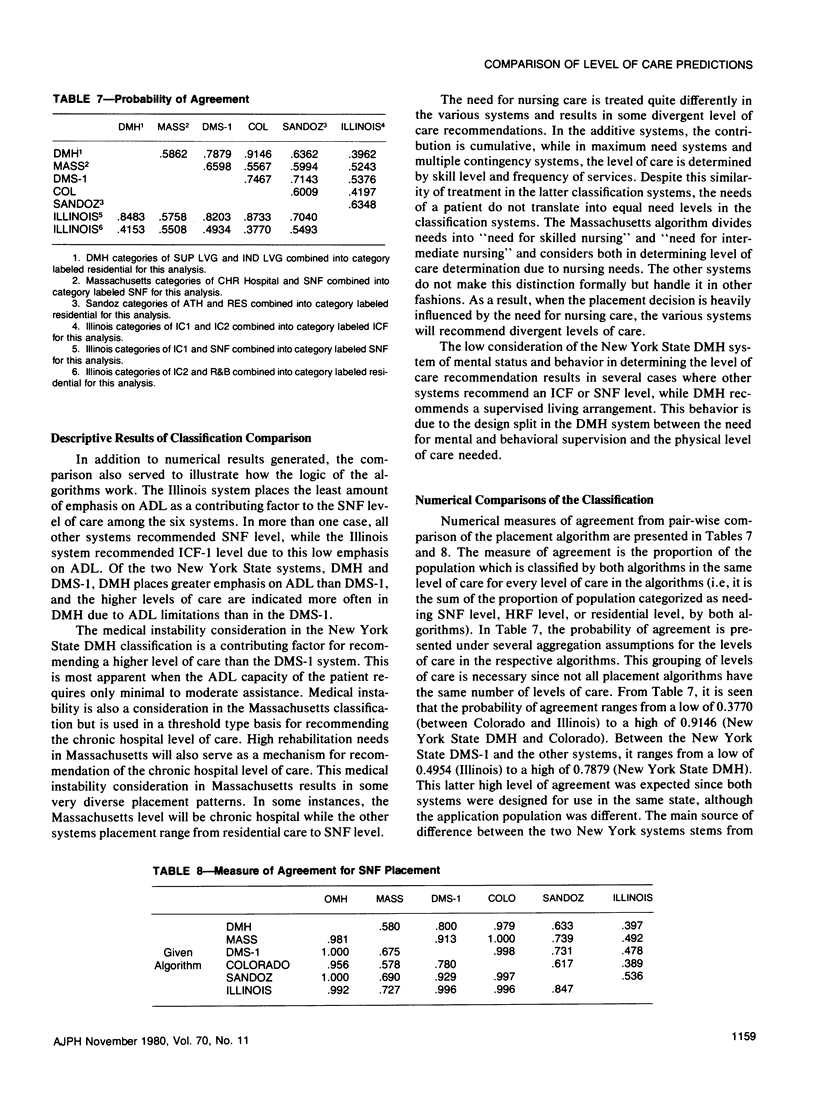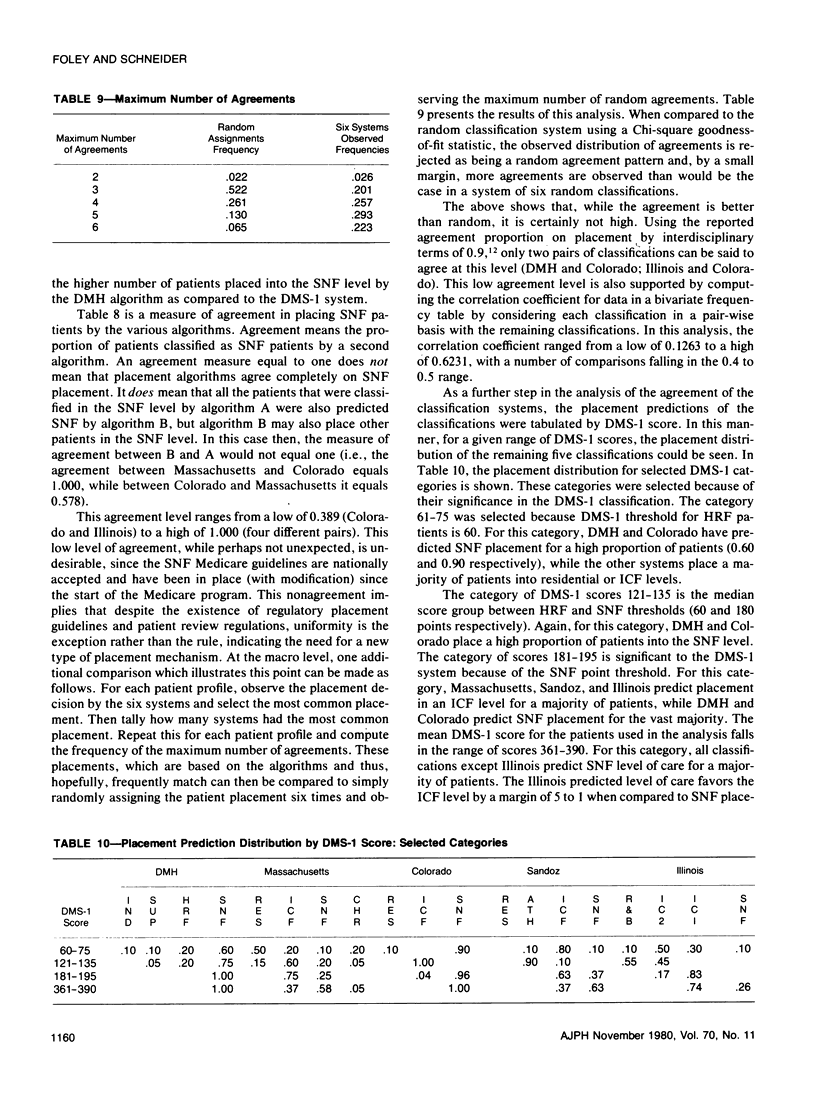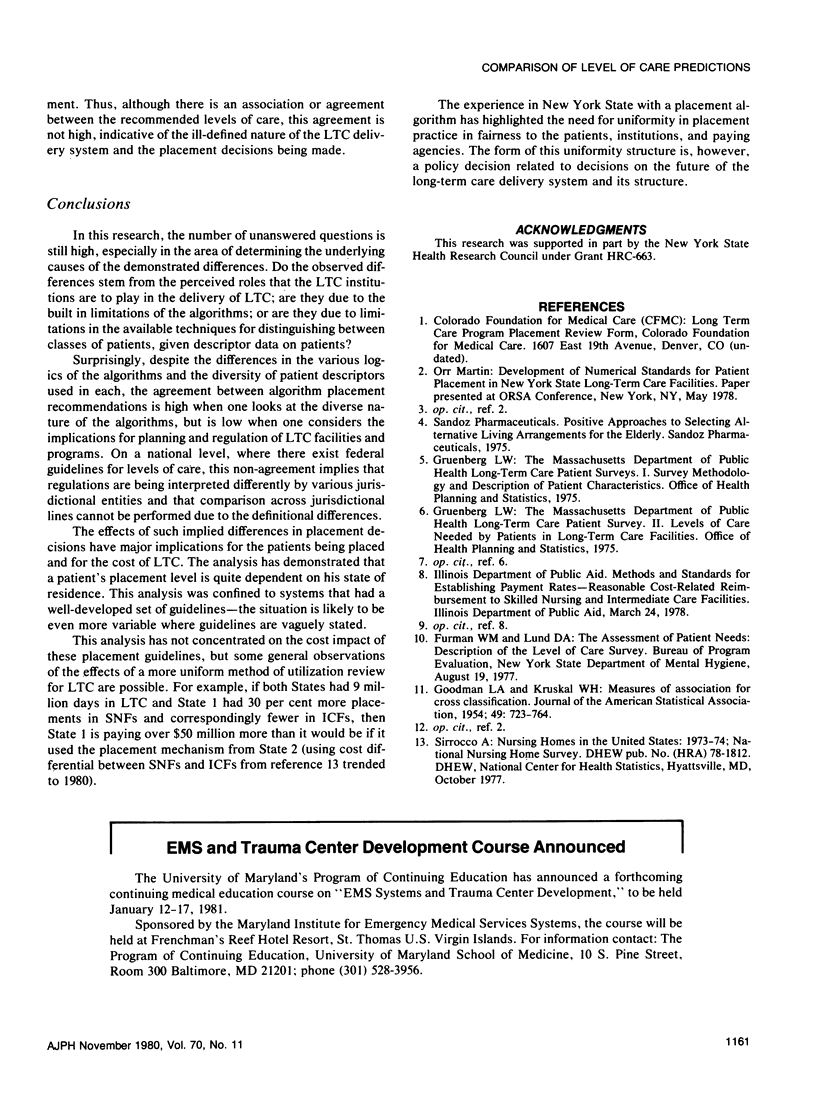Abstract
Six patient assessment systems that have explicit decision rules for replicating team judgments on level of care patient placement were selected for analysis. The six were selected because of their origin, logic or decision diversity, and their ability to be programmed on a computer (i.e., explicit decision rules). Six hundred seventy-nine patient descriptor profiles were collected on patients currently in New York State nursing homes. These patients were then "placed" by level of care for each assessment system. The probability of agreement of placement between pairs of assessment systems ranges from 38 per cent to 91 per cent. Among SNF (skilled nursing facility) patients only, the level of agreement drops as low as 39 per cent. Uniformity of placement criteria is, in fact, the exception rather than the rule. A patient's placement is quite dependent on both his/her state of residence and his/her health status. The effect of differences in placement decisions has major implications for the patients being placed and for the cost of LTC (long-term care). This analysis was confined to systems that had a well developed set of guidelines--the situation is likely to be even more variable where guidelines are vaguely stated.
Full text
PDF